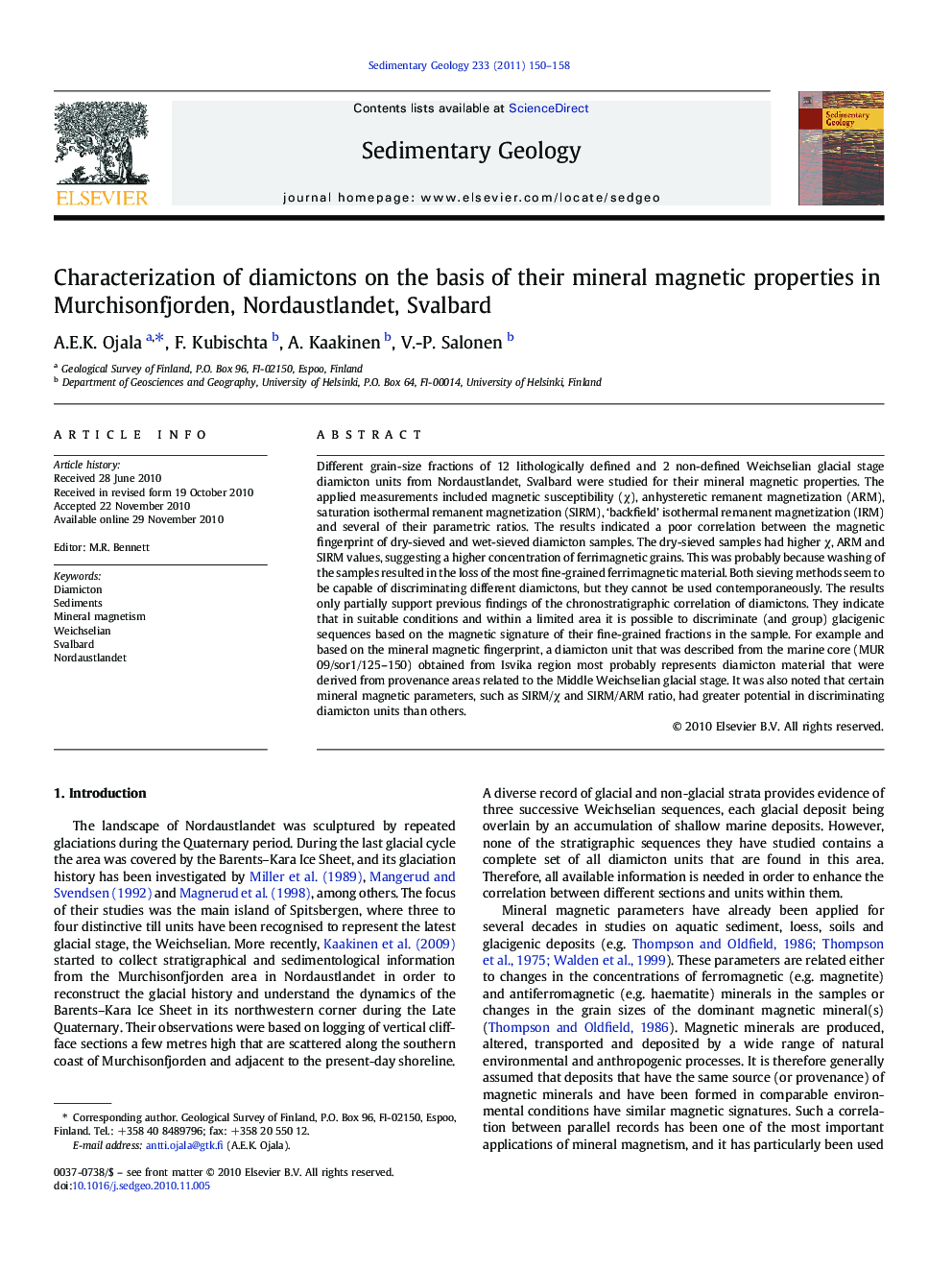| Article ID | Journal | Published Year | Pages | File Type |
|---|---|---|---|---|
| 4690079 | Sedimentary Geology | 2011 | 9 Pages |
Abstract
Different grain-size fractions of 12 lithologically defined and 2 non-defined Weichselian glacial stage diamicton units from Nordaustlandet, Svalbard were studied for their mineral magnetic properties. The applied measurements included magnetic susceptibility (Ï), anhysteretic remanent magnetization (ARM), saturation isothermal remanent magnetization (SIRM), 'backfield' isothermal remanent magnetization (IRM) and several of their parametric ratios. The results indicated a poor correlation between the magnetic fingerprint of dry-sieved and wet-sieved diamicton samples. The dry-sieved samples had higher Ï, ARM and SIRM values, suggesting a higher concentration of ferrimagnetic grains. This was probably because washing of the samples resulted in the loss of the most fine-grained ferrimagnetic material. Both sieving methods seem to be capable of discriminating different diamictons, but they cannot be used contemporaneously. The results only partially support previous findings of the chronostratigraphic correlation of diamictons. They indicate that in suitable conditions and within a limited area it is possible to discriminate (and group) glacigenic sequences based on the magnetic signature of their fine-grained fractions in the sample. For example and based on the mineral magnetic fingerprint, a diamicton unit that was described from the marine core (MUR 09/sor1/125-150) obtained from Isvika region most probably represents diamicton material that were derived from provenance areas related to the Middle Weichselian glacial stage. It was also noted that certain mineral magnetic parameters, such as SIRM/Ï and SIRM/ARM ratio, had greater potential in discriminating diamicton units than others.
Related Topics
Physical Sciences and Engineering
Earth and Planetary Sciences
Earth-Surface Processes
Authors
A.E.K. Ojala, F. Kubischta, A. Kaakinen, V.-P. Salonen,
